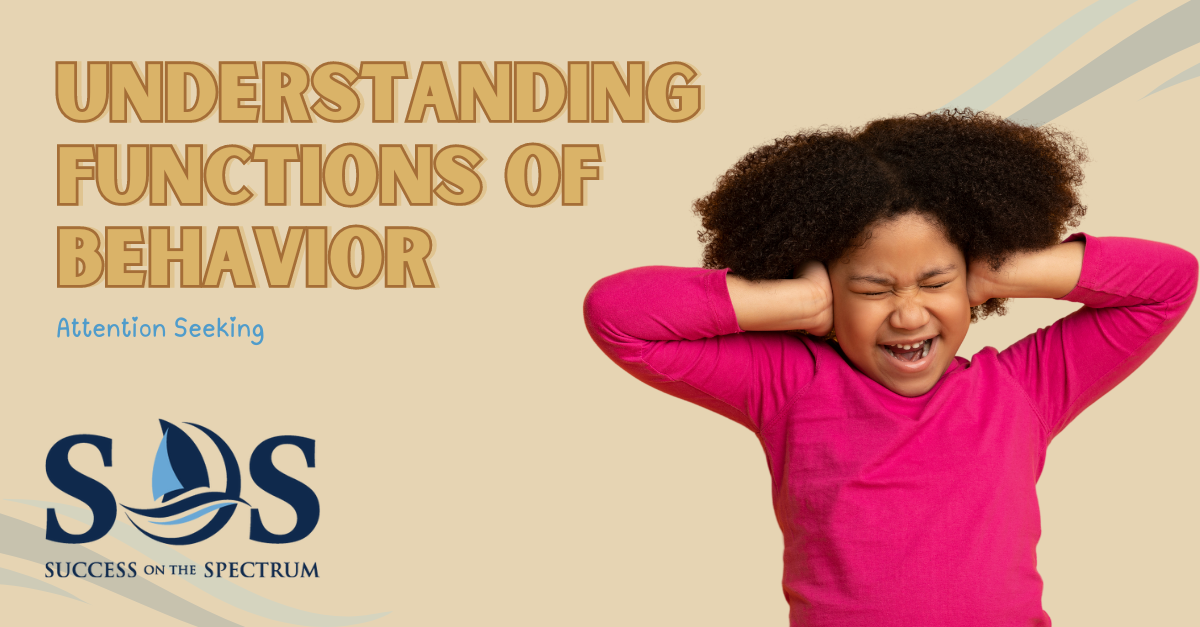Recognizing Attention-Seeking Behaviors
Children love getting attention from others, especially their parents. But let’s be honest, we do the same, especially when it comes from someone important to us, such as our bosses, closest confidantes, or significant others. However, as adults, we tend to have appropriate ways to seek attention from others, such as staying late after work so that our boss will notice or spontaneously hugging our significant others for no reason other than wanting a little affection. Children, on the other hand, may engage in attention-seeking behavior that is not always socially appropriate.
Our children, on the other hand, may not always have the best methods of obtaining our attention and may engage in behaviors that are not socially appropriate. But there are ways to recognize those behaviors, respond accordingly and reinforce whenever attention is appropriately sought.
Before knowing how to respond to your child’s attention-seeking behaviors, it is important to recognize why the behaviors are occurring. If your child is engaging in behaviors due to lack of attention, it is because there is either the threat of attention being removed from them, the jealousy of someone else receiving attention instead of them or wanting attention from someone who is busy with something else or talking to someone else.
Common Scenarios of Attention-Seeking Behavior
Think about how your child reacts whenever their sibling gets attention from you and they don’t. Do they whine or try to show off? Do they cry? If so, this is because they are expressing that they are unhappy that someone else is receiving attention instead of them.
Now think about what your child does when their dad is about to stop playing with them in order to watch a football game? Do they all of a sudden begin talking loudly and crawl onto dad’s lap? This is because they are expressing that they are threatened by the thought of attention being removed from them?
And finally, have you ever seen your child do something silly at the dinner table when everyone else is busy eating, such as by spitting out their food while giggling? This is because everyone else is busy eating dinner and not actively attending to them.
Responding to Attention-Seeking Behavior
The first thing to consider is the intensity of the behaviors. If the behavior is of low-intensity, such as whining, frowning, softly crying or crossing arms across their chest, then simply provide your child with an alternative and appropriate way to seek attention from you and then give them the attention that they seek.
For example if your child starts whining because you are focused on browsing through your phone, show them how to tap you on the shoulder or give them an easy phrase to say, such as “Mom, look!”. Once your child engages in the alternative behavior, give them quality attention. This will hopefully help them learn that there are other ways to get your attention besides through whining?
If the behavior is more extreme or of higher intensity, such as your child having a loud tantrum or screaming at you when you are busy doing something else, continue doing whatever were doing but redirect them to an alternative yet neutral activity. This activity should be something that the child can easily do but not necessarily hate or love, such as flipping through a book or completing a puzzle.
It should also be something that you can easily retrieve and give to them without having to look too hard for it. Once they begin to engage in the alternative activity and their attention-seeking behaviors begin to subside, attention can be provided to them. This method will hopefully show your child that there are better ways to get your attention, instead of by screaming or having a tantrum. This method will also show your child that you are still acknowledging them without acknowledging the challenging behavior.
Reinforcing Desired Behaviors
As you focus on addressing your child’s attention-seeking behavior, I want you to also focus on your own reaction too. As difficult as it can be, try your best to not react in a way that shows your child that you are bothered by their behavior. Try to keep in mind that any attention is still attention, whether it’s a positive or negative reaction.
In case you don’t already, be sure to follow Success On The Spectrum on LinkedIn and all other social platforms. By following our company page, you’ll stay up-to-date on the latest industry trends, scientific research, and exciting opportunities within our organization. Interested in a career with Success On The Spectrum? Check out our careers page to begin charting your course to a career in ABA therapy. Applications are always welcome. Interested in owning an SOS center? Visit SOS Franchising to learn more about how you can make a positive impact in your community with ABA therapy.


